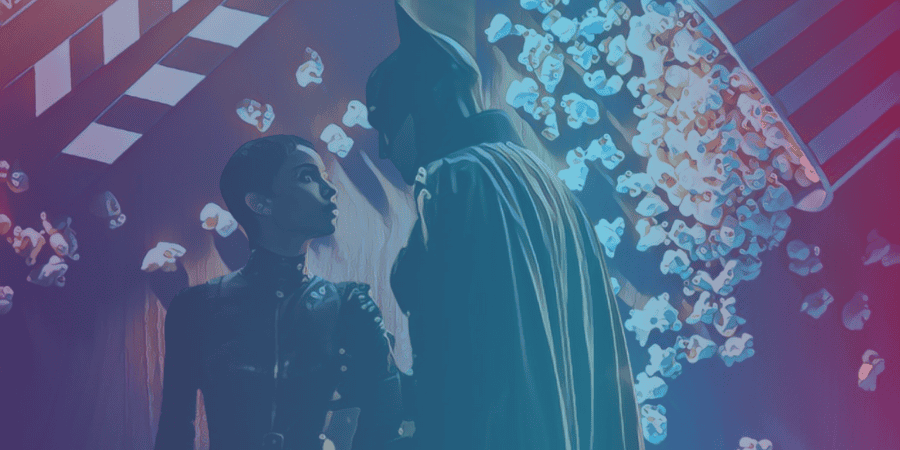Key Takeaways
- The trend towards darker visuals and naturalistic lighting in modern cinema can be attributed to various factors, including technological advancements and filmmaking choices.
- Naturalistic lighting can pose unique challenges for night scenes, where filmmakers must balance realism with visibility.
- Darkness serves practical and emotional purposes in cinema, and some filmmakers use it to create textured, high-contrast images.
- The film industry is beginning to acknowledge the lighting challenges faced by Black actors and other people of color on screen.
- While the trend towards darker visuals and naturalistic lighting can add depth and realism to films, it can also impact the viewing experience for audiences. Streaming platforms have implemented technologies to combat this issue, but automated solutions may not always be perfect.
- The future of darkness in cinema is uncertain, and filmmakers must consider the practicalities of their chosen techniques, the emotional impact of darkness on their storytelling, and the viewing experience of their audience.
Cinematic darkness has become a common complaint among moviegoers in recent years.
This trend can be traced back to the late seasons of Game of Thrones, where viewers frequently complained about struggling to see what was happening on screen.
This shift toward darker visuals can be attributed to various factors, including streaming compression, suboptimal viewing conditions, and a move toward naturalistic lighting in filmmaking.
Filmmaking Choices and Current Trends
The root of this shift in visual language cannot be solely attributed to technological advancements or changes in filming equipment.
Filmmaking choices, such as the preference for motivated lighting – lighting that has a rational, logical basis within a scene – have played a significant role in this transformation.
This trend toward more naturalistic lighting is reflected in big-budget blockbusters like Harry Potter and the Deathly Hallows – Part 1, Interstellar, and Dawn of the Planet of the Apes.
These films favor practical, realistic light sources, which often results in darker, more directionally lit sets.
The Challenge of Night Scenes
Naturalistic lighting can pose unique challenges for night scenes, where filmmakers may struggle to find a balance between realism and visibility.
An example of this dilemma can be found in the trailer for the upcoming remake of Peter Pan & Wendy, where Tinker Bell is used as the primary light source.
While filmmakers like David Lowery and Andrew Droz Palermo are committed to motivated lighting, this choice can sometimes lead to scenes that push the boundaries of a chosen aesthetic.
Regardless, filmmakers encourage viewers to honor their intentions by watching films in optimal conditions, such as a dark theater or on a high-quality screen.
Practical and Emotional Reasons for Darkness
Industry veteran Kay, who has worked on films like Joker, Venom, and Black Panther, believes that darkness serves both practical and emotional purposes in cinema.
Filmmakers often use darkness to evoke a sense of truthfulness and to counteract the sharpness, crispness, and perfection of digital imagery.
Some cinematographers, like Marcell Rév of HBO’s Euphoria, have turned to discontinued film stocks like Kodak Ektachrome to create textured, high-contrast images.
This technique allows them to experiment with light in ways that most filmmakers cannot achieve using digital cameras alone.
The Impact of Film Noir and David Fincher
David Fincher’s 1995 film, Seven, is noted for revolutionizing the way movies were shot in the 90s. Cinematographer Darius Khondji’s use of underexposed film stock and lighting techniques created a unique and dark aesthetic that still influences filmmakers today.
In The Batman, director Matt Reeves and cinematographer Greig Fraser utilized a similar technique by printing the digital print of the movie onto film and employing a bleach bypass process.
David Fincher’s 1995 film, Seven, is noted for revolutionizing the way movies were shot in the 90s. Cinematographer Darius Khondji’s use of underexposed film stock and lighting techniques created a unique and dark aesthetic that still influences filmmakers today.

The Role of Studios and Control
As digital technology has gained prominence, studios have also gained more control over the final product.
Kay believes that this control has led to many films being brighter than necessary, with the exception of well-known auteurs and cinematographers who maintain full control over their work.
Addressing Inequity in Lighting for Actors of Color
The film industry has recently begun to acknowledge the lighting challenges faced by Black actors and other people of color on screen.
Cinematographers like Bradford Young and Ava Berkofsky have made significant contributions to the craft by developing techniques for lighting darker skin tones.
Practical Reasons for Dark Scenes
In some cases, the darkness in a film serves practical purposes, such as hiding special effects makeup, lighting cables, or other elements that filmmakers do not want the audience to see.
This technique can be especially useful in lower budget productions, where resources and time are limited.
By using darkness to their advantage, filmmakers can create a sense of immersion and believability, even when working with less-than-ideal materials or circumstances.
The Impact on Audiences and Viewing Experience
While the trend towards darker visuals and naturalistic lighting can add depth and realism to films, it can also impact the viewing experience for audiences.
In some cases, viewers may struggle to see and understand what is happening on screen.
This issue is further exacerbated by the various devices people use to watch movies and television, such as smartphones, tablets, and laptops, which may not offer the same level of image quality as a cinema screen or high-end television.
To help combat this issue, many streaming platforms have implemented technologies to automatically adjust the brightness and contrast levels of a film or television show based on a viewer’s device and viewing environment.
However, these automated solutions may not always be perfect and can sometimes detract from the filmmaker’s intended aesthetic.
The Future of Darkness in Cinema
As the film industry continues to evolve, it is unclear whether the trend towards darker visuals and naturalistic lighting will persist.
Some filmmakers may choose to embrace this aesthetic as a means of distinguishing their work, while others may opt for brighter visuals in response to audience feedback or technological advancements.
Ultimately, the balance between darkness and visibility in cinema will likely remain a delicate dance.
Filmmakers must consider the practicalities of their chosen techniques, the emotional impact of darkness on their storytelling, and the viewing experience of their audience.
As technology continues to advance and the industry becomes more diverse, we can expect to see a broader range of visual styles and approaches to lighting in film and television.








